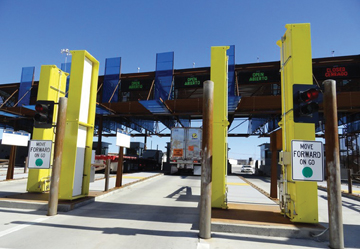Two Steps Forward, One Step Back?
Of primary concern with the new port of entry has been staffing. The new facility is still understaffed, which leads to some delays during peak periods. Yet the Fresh Produce Association of the Americas (FPAA) and other proponents have addressed the problem over the past several years, resulting in an additional 120 U.S. Customs and Border Protection officers allocated to the Mariposa Port as part of the 2014 Omnibus Spending Bill.
Allison Moore, director of legislative and regulatory affairs at the FPAA, says it’s not just the port or lack of staff causing delays. “You have to look at the whole process,” she explains. “Some of the delays we’re seeing are caused by Federal Motor Carrier Safety Administration (FMCSA) inspections and U.S. Food and Drug Administration (FDA) inspections.
“We’re working on making the whole process more efficient, even after having solved the infrastructure problems,” emphasizes Moore. “The new port of entry is significantly more efficient already, and we will continue pushing Congress to get the additional staff we need, which is not a unique need for Nogales, but at every port of entry.”
One development, according to Moore, is a federal initiative to improve the Automated Commercial Environment, or ACE, a system that connects all U.S. agencies with oversight of imported goods. For example, it will enable customs agents and the FDA to communicate electronically, and Arizona Department of Transportation and U.S. Department of Transportation FMCSA personnel to work together more efficiently on truck inspections.
Additionally, new methods of delivering produce from Mexico to the United States are being explored. “Long term, we are potentially looking at rail or intermodal as a solution to transporting needs,” Moore says. “We’re on the main route for rail tracks going from Sonora to Arizona, and rail is already carrying cars, coal, and grain. Rail and intermodal are possibilities for making produce delivery more efficient.”
Ongoing Rivalry: Arizona and Texas
Given the ever-increasing demand for produce from Mexico and Central America, there are more than enough fruit and vegetable imports to go around—but this hasn’t stopped the rivalry and rhetoric between receivers in Arizona and Texas.
Certain reports showed an increase in border volume at Texas ports, leading some to conclude Nogales is losing ground. This is despite the fact that 37 percent of all Mexican produce delivered to the United States crosses at Nogales, according to the U.S. General Services Administration.



